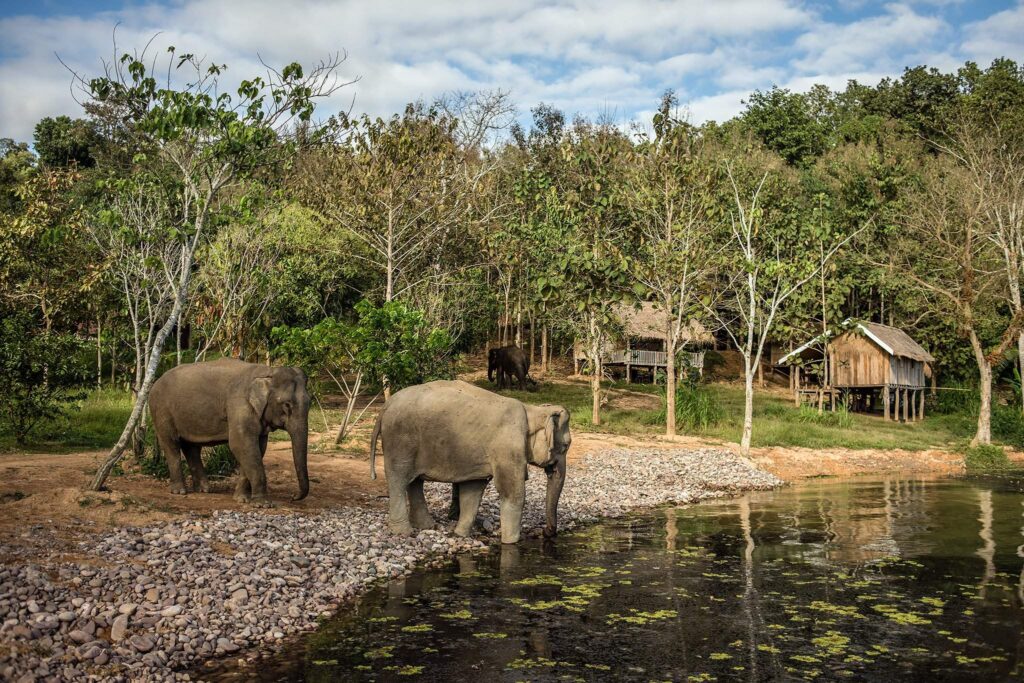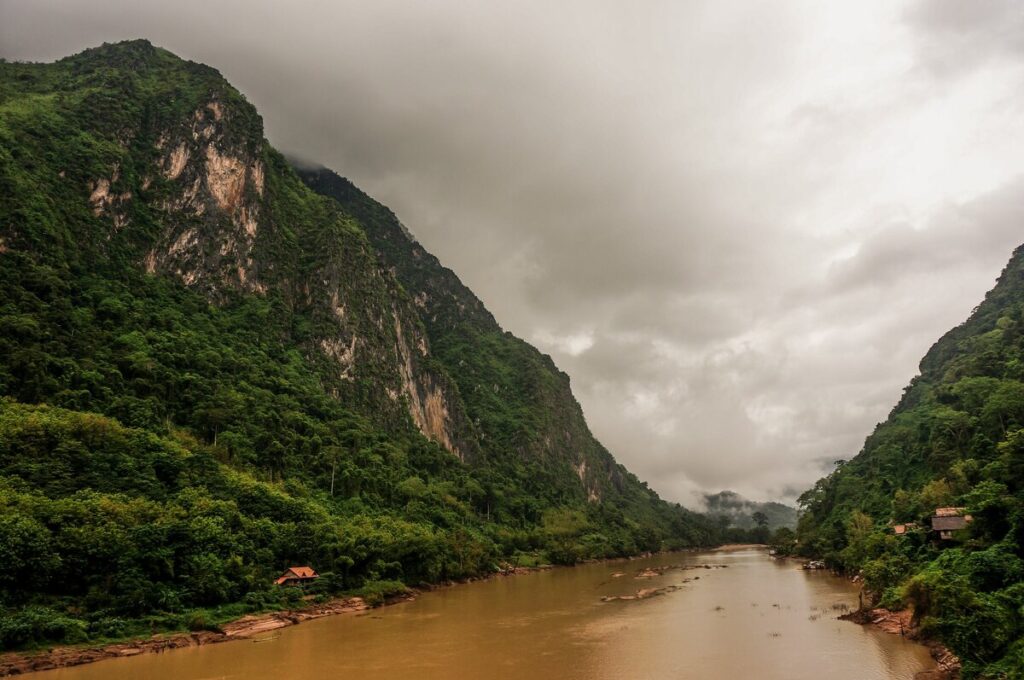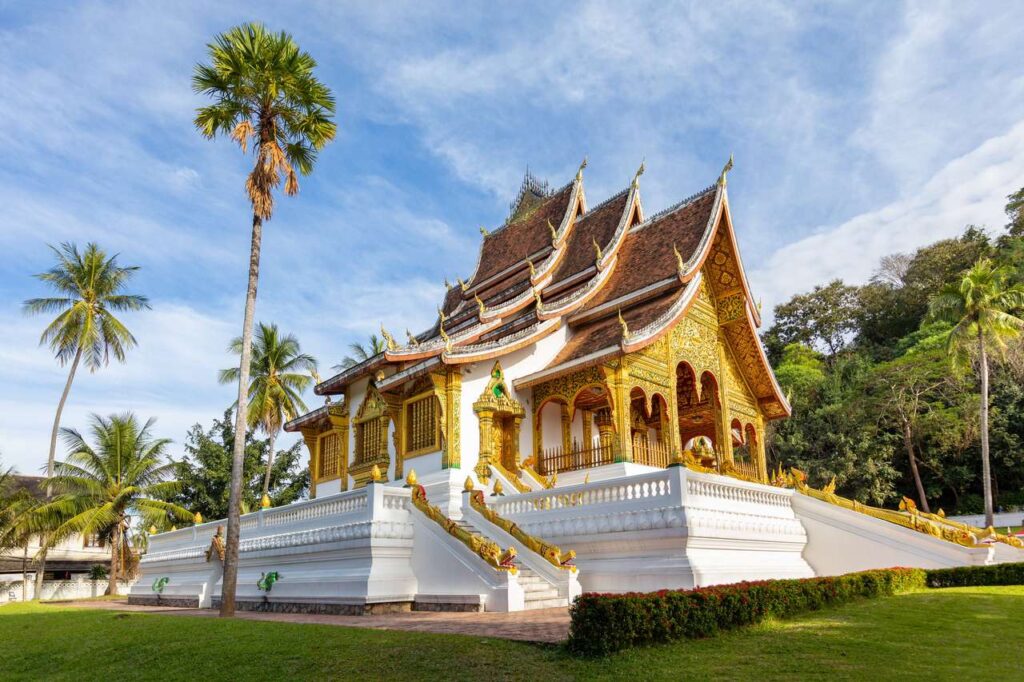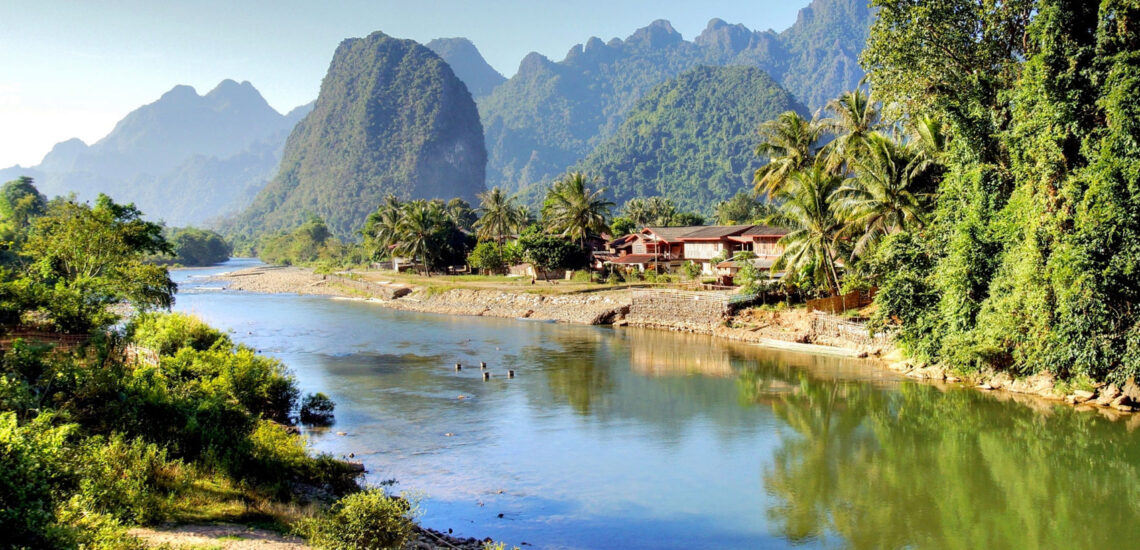10 Interesting Facts About Laos
Quick facts about Laos:
- Capital: Vientiane
- Population: Over 7.4 million
- Official language: Lao
- Currency: Lao kip
- UNESCO Sites: Luang Prabang, Vat Phou, Plain of Jars
- Land of Smiles: Traditional greeting is a “nop,” a slight bow with palms pressed together.
- Breathtaking Scenery: Mekong River, lush landscapes, and ancient temples enchant visitors.

Fact 1: Laos is also known as the land of a thousand elephants
Laos, often referred to as the “Land of a Thousand Elephants,” is a country steeped in cultural richness. This name harks back to the historic kingdom of Lane Xang, where elephants were not just revered but also integral to transportation and agriculture. These majestic creatures symbolize Laos’s strength and endurance, reflecting the nation’s enduring spirit.
Fact 2: The basis of the daily diet is rice
Rice forms the staple diet in Laos, constituting a significant portion of daily meals. Approximately 80% of the population relies on agriculture, with rice being a primary crop. The country’s diverse geography and climate contribute to rice cultivation, and Laos has been known for various rice varieties. The cultivation and consumption of rice are deeply ingrained in Laotian culture, shaping dietary habits and agricultural practices.

Fact 3: Laos is the only country in Southeast Asia that is landlocked
Laos is the only landlocked country in Southeast Asia, surrounded by Vietnam to the east, Cambodia to the southeast, Thailand to the west, Myanmar to the northwest, and China to the north. Despite being devoid of coastlines, Laos boasts picturesque landscapes, including lush forests, rivers, and mountainous terrain.
Fact 4: The country’s main river is the Mekong
The Mekong River is a lifeline for Laos, providing approximately 80% of the country’s protein through fisheries. It stretches over 4,350 kilometers, flowing through six countries, and serves as a vital trade route, fostering economic activities. Additionally, the Mekong hosts the endangered Irrawaddy dolphins, making it not just a waterway but a rich ecosystem.
Along with other rivers and lakes, Laos has about 4,000 islands even landlocked.

Fact 5: Buddhism is the main religion of Laos
Buddhism plays a crucial role in the culture and daily life of Laos. Approximately 65-70% of the population adhere to Theravada Buddhism, making it the primary religion. Monasteries and Buddhist temples serve as important centers for spiritual practice and lifestyle for many Laotians. Notable temples, such as the Pha That Luang in Vientiane, hold immense cultural and historical significance, attracting both locals and tourists seeking spiritual enrichment and architectural marvels.
Fact 6: Laotians are among the shorter populations globally
The average height in Laos is lower compared to some other countries. As of recent data, the average height for Laotian men is around 162 cm (5 feet 4 inches), and for women, it is approximately 150 cm (4 feet 11 inches). It’s worth noting that height is influenced by various factors, including genetics and nutritional conditions, and does not necessarily correlate with the overall well-being or development of a nation.

Fact 7: Laos’ main export crop is coffee
Coffee is a major export commodity for Laos, and the country has gained recognition for its high-quality Arabica and Robusta coffee beans. The coffee industry has been a crucial contributor to the country’s economy, providing income for many local farmers. Laotian coffee is known for its unique flavor profile, and the industry has seen growth with increasing global demand for specialty coffees.
Fact 8: In Laos there is the “Plain of Jugs” which is a UNESCO World Heritage Site.
The “Plain of Jars” is a historical and archaeological site in Laos known for large ancient stone jars scattered across the landscape. During the Vietnam War, the region was heavily bombed by the United States, and unexploded ordnance (UXO) remains a danger. Some areas of the Plain of Jars are restricted or require caution due to the presence of unexploded bombs, making them potentially hazardous for tourists. Efforts are ongoing to clear these areas and ensure safety, but certain zones may still be off-limits to visitors.
Note: If you plan to visit the country, check the need for an International Driver’s License in Laos for driving.

Fact 9: Laos is home to the widest waterfall in the World
The Khone Phapheng Falls on the Mekong River in southern Laos is recognized as the widest waterfall globally, with an average width of about 10 kilometers during the rainy season. This waterfall is a natural marvel, attracting tourists with its majestic beauty. It’s worth noting that the waters also host diverse fish species, contributing to the Mekong River ecosystem’s significance. Additionally, the Mekong River in Laos features other stunning waterfalls, adding to the region’s unique natural charm.
Fact 10: Laos is still a communist country
Laos is officially known as the Lao People’s Democratic Republic (LPDR), and it has maintained a socialist political system since 1975. The Lao People’s Revolutionary Party (LPRP) is the ruling party, and it operates as the only legal political party in the country. While there have been economic reforms in recent years, Laos remains a one-party state with a socialist orientation.





